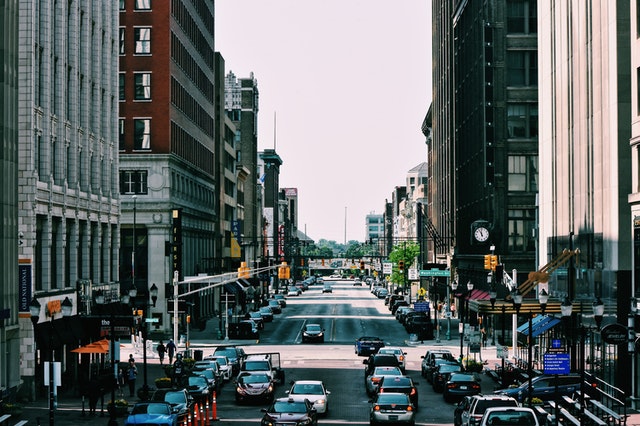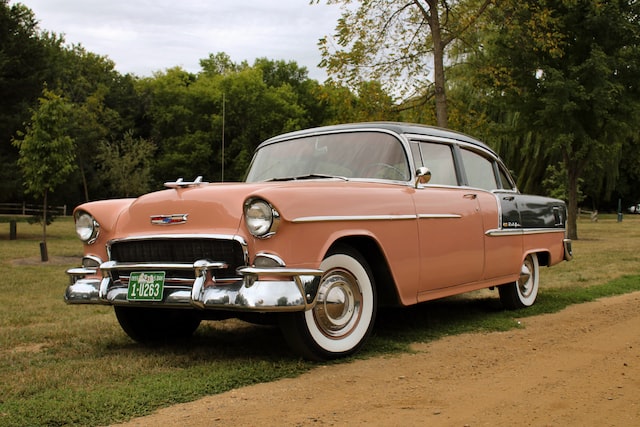The intersection is the most common danger on the road. Intersections vary greatly and can be confusing to both experienced and new drivers. Whether you’re traveling in a huge metropolis or a small village, you’re certain to cross paths with other people. Intersections can be stressful driving conditions since there’s usually a lot going on: plenty of directional signs, turning lanes, merging lanes, traffic signals, and a slew of other cars that are in the same rush as you. Recognizing the many sorts of intersections and the general regulations linked with them is the most useful way of learning how to travel safely through them. A list of common types of intersection roads is provided below.
What is an intersection?

Any point where one route intersects with another is referred to as an intersection. Cross streets, side streets, alleyways, freeway entrances, and any other point where cars driving on various highways or roads meet are all examples of intersections. A four-way (or crossroads) intersection, a three-way (T-junction or Y-junction, often known as a fork), or a five-way (or multi-way) intersection can be found.
How are intersections controlled?
- Stop or yield signs are generally used at intersections with little or no traffic
- Stoplights are typically used at intersections with high or rapid traffic
- Stop or yield signs are typically used to regulate intersections in residential areas
- Roundabouts are used to control some intersections.
8 Most Common Types of Intersection Roads
-
A Four-way intersection
The most frequent sort of intersection is a four-way intersection, which involves the crossing of two roads. At a four-way intersection, the roads can approach each other at any angle, although they frequently seem perpendicular, especially in urban areas where the roads are laid out in a grid pattern. Stop signs or traffic signals are used to govern four-way intersections. Only proceed when you see a green light at a four-way intersection controlled by a traffic signal. On a green signal, only turn left if there is no oncoming traffic. Vehicles gain the right of way in the order they arrive at a four-way intersection controlled by a stop sign
-
A T-junction
A T-junction is a crossroads where a small road intersects with the main route. These are some of the most typical sorts of junctions you’ll come across. At a T-intersection, the small highway is nearly always controlled by a stop sign, while the larger route cars can continue driving without stopping. The most essential thing to know about T-intersections is that cars on the main highway always have the right of way. Before driving out into the primary route, the vehicle that intends to turn right or left must come to a complete stop and look in both directions.
-
A Y-intersection
A Y-intersection has three parts, similar to a T-junction, but one highway meets another of equal size, giving the impression that the two are merging into one. Y-intersections can be divided into two types. On both routes, a little distance from the actual junction, there will be a stop sign. All vehicles must come to a complete stop, with the vehicle that arrives first at their particular stop sign proceeding first. The second form of Y-intersection requires cars on one road to come to a complete stop and check-in both directions for approaching traffic before driving out into the other road.
-
A traffic circle
A traffic circle or roundabout is frequently used to handle a four-lane or more-lane intersection. When approaching a roundabout, yield to oncoming traffic and then turn right to drive around the circle in a circular direction. When you reach the road you wish to stay on, turn right again to leave the roundabout. Stopping when driving on a roundabout is dangerous since pile-ups can happen rapidly.
-
A “fork”
A “fork” in the road is a real intersection where two roads come together. One lane of the main road is divided into two mini-lanes, one of which connects to a connecting road and the other of which continues along the route’s original path. At a fork in the road, there is usually a median space between these two parts of the main route.
-
Turning lanes
When there is a lot of traffic at a crossroads, turning lanes arise. These lanes are normally controlled by a traffic signal and are reserved for cars that want to turn left at an intersection. A painted arrow on the pavement marks the turning lane. On the traffic signal that controls the turning lane, an arrow will also display. You must complete the turn if your vehicle is positioned in a turning lane at an intersection.
-
Controlled or uncontrolled
Controlled and uncontrolled intersections are often used terms. The most common type of controlled intersection is one with stop signs or traffic lights. In remote locations with low traffic, uncontrolled intersections are common. Warning signs often alert drivers to oncoming uncontrolled intersections; yet, no traffic signal or stop sign is visible. If you come upon an uncontrolled intersection, take it slow and steady. When deciding the right of way, use common sense and chronological sequence.
-
Pedestrian crosswalk
Pedestrian crosswalks are commonly seen at intersections, especially in metropolitan areas. When turning right at a junction, keep an eye out for people crossing the street and give them the right of way.
When approaching an intersection, the most important rule is to slow down. Because two or more highways are passing through one small space, the intersection road inherently features larger traffic densities. Reduce your speed, observe normal right-of-way regulations, pay attention to traffic lights, keep an eye out for pedestrians, and continue your travel in a safe way.
If you want to get more information on road signs and other rules of the road, visit our website and take our free DMV practice test to obtain the essential knowledge to be safe while driving!
Read more >> 6 Types of Roadways In U.S

UT Utah License Renewal: A 2025 Comprehensive Guide
Discover the ultimate guide to Utah license renewal! This comprehensive guide delves into the intricacies of renewing your driver's license in Utah,...
February 13, 2023

South Carolina S.C. Driver's License Renewal
The South Carolina S.C. driver's license renewal process is designed to be comprehensive, taking into consideration eligibility requirements, renewal methods,...
February 13, 2023

Pennsylvania PA DMV License Renewal: A 2025 Full Guide
The Pennsylvania PA DMV license renewal process is designed to be comprehensive, taking into consideration eligibility requirements, renewal methods,...
February 10, 2023
